Tomato growers that are passionate about their hobby often seek low-cost, all-natural ways to boost plant vitality and yield. One noteworthy alternative is the use of eggshell calcium, which is a sustainable method that transforms food leftovers into a powerful supply of nutrients.
To develop strong resistance to diseases like blossom end rot and stronger cell walls, tomato plants require calcium. In keeping with the principles of organic gardening, eggshells—which are rich in calcium carbonate—offer a sustainable alternative to synthetic fertilizers.
Learn all you need to know about utilizing eggshell calcium to create strong tomato plants in this comprehensive guide. You will learn all the practical information you need to transform your landscape in just 15 detailed sections. Even if you’re a beginner, you can use this method to grow bigger, healthier tomato plants with something you probably already have.
What are we waiting for? Let’s start using eggshell calcium for tomatoes for stronger roots and high yields.
Boost Tomato Growth: How Eggshell Calcium Strengthens Roots & Prevents Rot
Collecting and Cleaning Eggshells for Optimal Calcium Extraction
| Step | Action | Purpose | Notes |
|---|---|---|---|
| 1 | Gather eggshells | Collect base material | Use shells from at least 12 eggs |
| 2 | Rinse shells | Remove egg white residue | Prevents pests and mold |
| 3 | Air-dry shells | Prevent bacterial growth | Use open container, avoid jars |
| 4 | Crush shells | Facilitate processing | Break into smaller pieces |
| 5 | Source organic eggs | Avoid chemical contamination | Prefer free-range or organic |
| 6 | Store in dry place | Maintain quality | Ensure ventilation |
Gathering eggshells is the initial stage in creating a nutrient-rich fertilizer for your tomato plants. After shattering an eggshell, give it a quick rinse to remove any residual egg white that could attract pests or mold. To get the calcium from tomatoes, you can use eggshells.
Allow them to air-dry entirely in an open container (such as a bowl) to prevent the growth of bacteria. Avoid preserving wet shells in jars because doing so promotes decay. To make eggshell fertilizer, wash them gently in warm water if needed; avoid using soap because its residues could harm the soil.
Crush dried shells into smaller pieces to facilitate processing and storage. Collect the shells of at least twelve eggs to ensure that several plants receive a sufficient amount of calcium.

To promote the use of eggshells in organic gardening and to avoid chemical contamination, it is best to source them from free-range or organic eggs. Making sure your eggshells are clean, safe, and ready to grind or steep will boost the nutrients available for tomato plants and maximize the availability of calcium. Keep them in a dry, well-ventilated place until you’re ready to use them to make soil that is high in calcium.
Grinding Eggshells into a Fine Powder for Maximum Absorption
| Step | Action | Purpose | Notes |
|---|---|---|---|
| 1 | Bake shells | Kill bacteria | 225°F for 20 minutes |
| 2 | Cool shells | Prepare for grinding | Ensure completely cool |
| 3 | Grind shells | Create fine powder | Use blender or mortar |
| 4 | Process in batches | Avoid inhaling dust | Wear a mask |
| 5 | Store powder | Maintain efficacy | Use glass container |
| 6 | Apply to soil | Enhance absorption | Faster nutrient release |
Making a fine powder out of crushed eggshells enhances the calcium delivery to tomato plants. Crush the dry eggshells in a mortar and pestle, coffee grinder, blender, or other similar device to make ground eggshell fertilizer for tomato plants.
Tomato plants can be supplemented with calcium more easily if the powder breaks down quickly. To avoid breathing in particles, process in small batches and use a mask. The end result should be a texture similar to dust.
To make eggshell powder that is useful for gardening, bake the eggshells at 225°F for 20 minutes to kill any bacteria. Let them cool, and then grind them. This procedure is a crucial step to ensure that the calcium in the eggshell stays uncontaminated, which is essential for the healthy growth of tomatoes.
Seal the powder in a glass container and store it in a cool, dry place to maintain its efficacy for months. Roots are able to absorb calcium more effectively from powdered eggshells than from larger pieces, and the nutrient release time is reduced when using this material for plant growth. This method encourages organic tomato plant care, ensures strong stems and colorful fruit, and provides a sustainable way to strengthen soil without the use of artificial additives.
Creating Eggshell Tea for Rapid Calcium Delivery
| Step | Action | Purpose | Notes |
|---|---|---|---|
| 1 | Boil water | Prepare base | Use 1 gallon non-chlorinated water |
| 2 | Add shells | Extract calcium | Use 10-12 crushed shells |
| 3 | Soak overnight | Enhance strength | Draws out calcium carbonate |
| 4 | Filter tea | Avoid over-concentration | Dilute before use |
| 5 | Apply to plants | Deliver nutrients | Spray or soil every 5 days |
| 6 | Store properly | Maintain quality | Use within a month |
To directly feed tomato plants calcium, eggshell tea is an excellent liquid fertilizer. To prepare tomato eggshell tea, boil one gallon of water and add ten to twelve clean, crushed eggshells.
If you want your tea made from eggshells for tomato plants on the strong side, soak the ingredients in water overnight to draw out the calcium carbonate. Before diluting the tea with water, filter it to avoid over-concentration. This technique allows plants to quickly absorb nutrients applied to their leaves or soil by guaranteeing a steady supply of liquid calcium for tomato growth.
If you want your plants to stay healthy, try spraying them with eggshell tea or adding some to the soil every five days. To prevent shortages, this is particularly crucial during fruit sets.
Use non-chlorinated water to enhance eggshell fertilizer for organic tomatoes so soil microbes can continue to do their job. The slow degradation of calcium in tomato plants is swiftly remedied by the water-soluble calcium included in the tea. This method is ideal for gardeners seeking an eco-friendly alternative to commercial fertilizers for tomato plants; it increases fruit quality and plant vigor at a reasonable cost.
Applying Eggshell Powder to Soil for Long-Term Nutrient Release
| Step | Action | Purpose | Notes |
|---|---|---|---|
| 1 | Measure powder | Ensure correct dosage | 1 tbsp per plant |
| 2 | Apply to soil | Distribute evenly | Top few inches of soil |
| 3 | Moisten soil | Aid settling | Helps powder disintegrate |
| 4 | Reapply regularly | Maintain nutrient levels | Every 2-3 weeks |
| 5 | Mix before planting | Strengthen cell walls | Provides early calcium access |
| 6 | Monitor pH | Prevent imbalance | Excess calcium affects uptake |
Applying eggshell powder provides tomato plants with a steady supply of calcium. Put a tablespoon of eggshell powder into the top few inches of soil around the base of each tomato plant to make sure it’s evenly distributed throughout the soil.
To facilitate the powder’s settling and disintegration, mildly moisten it after application. Tomatoes benefit from this technique since the calcium powder breaks down slowly over a period of weeks to months.
Soak the soil with eggshells every two to three weeks to keep the nutrient levels consistent all growth season long. Eggshell calcium powder, when mixed with soil before planting, strengthens cell walls and gives roots early access to calcium.
This method is compatible with organic tomato soil additions and reduces the requirement for chemical fertilizers. When applied in excess, calcium changes soil pH, which in turn affects tomato plant nutrient uptake. Regular applications encourage strong stems, reduce the likelihood of fruit diseases all season long, and ensure the establishment of healthy tomato plants.
Using Eggshells to Prevent Blossom End Rot in Tomatoes
| Step | Action | Purpose | Notes |
|---|---|---|---|
| 1 | Crumble shells | Prepare for planting | Add to planting hole |
| 2 | Apply powder | Boost existing plants | Sprinkle around base |
| 3 | Water regularly | Ensure calcium uptake | Inconsistent moisture hinders |
| 4 | Use foliar spray | Direct calcium delivery | Apply to blossoming plants |
| 5 | Inspect fruits | Monitor for rot | Check for dark, sunken areas |
| 6 | Reapply as needed | Maintain calcium levels | Regular eggshell use |
Lack of calcium often causes tomatoes to suffer from blossom end rot, but you can protect them by using eggshells. To prevent blossom end rot, crumble some eggshells and apply them to the planting hole before you plant your tomato seedling.
This ensures that the calcium from eggshells aids in preventing blossom end rot and boosts fruit development by providing roots with early access to calcium. Instead, sprinkle powdered eggshell powder over existing plants to encourage calcium for the health of tomato fruits.
Water your plants regularly to prevent tomato blossom end rot, as inconsistent moisture hinders calcium uptake. To make eggshells more effective against tomato illnesses, spray the blossoming plants with eggshell tea foliar spray. This procedure will allow the calcium to reach the growing fruits directly.

Following natural remedies for tomato plants, this method avoids synthetic treatments. To maximize the yield of tomatoes grown with eggshell fertilizer, it is important to inspect the fruit bottoms for any dark or sunken areas and address any shortages promptly. You can ensure that your tomato plants stay disease-free and produce abundant, beautiful tomatoes throughout the season by regularly using eggshells and irrigating them properly.
Balancing Soil pH with Eggshell Calcium for Tomato Growth
| Step | Action | Purpose | Notes |
|---|---|---|---|
| 1 | Test soil pH | Determine acidity | Use home kit |
| 2 | Add eggshells | Neutralize acidic soil | Crushed or powdered |
| 3 | Apply early | Allow decomposition | Months before planting |
| 4 | Reapply regularly | Maintain pH | Every few months |
| 5 | Monitor changes | Prevent alkalinity | Excessive pH harms uptake |
| 6 | Improve drainage | Enhance root health | Eggshells aid aeration |
Tomato plants can thrive in soil that has had its pH adjusted with the use of eggshells. To neutralize acidic soils, mix crushed or powdered eggshells with the soil. The calcium carbonate in the shells acts as a natural liming agent.
This promotes eggshell calcium for soil pH by progressively raising pH to the ideal 5.5-7 range for tomato plant health. Before applying, test the soil pH with a home kit since excessive alkalinity might inhibit nutrient absorption, which can harm tomato development with eggshells.
To make sure your soil is well-balanced, add some eggshell powder to the topsoil a few months before you plan to plant, so it has time to decompose. Organic tomato farms benefit from this method, which gradually reduces the need for chemical pH adjusters.
To maintain healthy soil for tomato plants, simply reapply it every few months and monitor any changes in pH. Furthermore, tomato roots benefit from better drainage and aeration caused by the soil’s structural reinforcement provided by eggshells. This eco-friendly technique encourages natural soil enrichment for tomatoes in well-balanced, nutrient-rich soil, which allows for strong fruit yields and quick growth.
Using Eggshells as a Pest Deterrent for Tomato Plants
| Step | Action | Purpose | Notes |
|---|---|---|---|
| 1 | Break shells coarsely | Create sharp barrier | Irritates soft-bodied pests |
| 2 | Distribute around plants | Deter slugs/snails | Apply at plant base |
| 3 | Reapply after rain | Maintain efficacy | Wet shells less effective |
| 4 | Combine with treatments | Boost plant health | Use with powder or tea |
| 5 | Keep shells dry | Prevent animal attraction | Ensure cleanliness |
| 6 | Supplement with diatomaceous earth | Enhance pest control | Natural pesticide |
To protect tomato plants from common garden pests like slugs and snails, eggshells can be used as a barrier. You can create a sharp barrier that irritates soft-bodied pests by distributing coarsely broken eggshells around the base of plants. This procedure will serve as a pest deterrent.
This strategy is useful for controlling pests that feed on tomato eggshells because the sharp edges keep slugs from reaching the fragile stems. Because damp shells lose some of their efficacy, it is necessary to reapply the barrier to tomato plants after heavy rain to maintain their natural pest control.
To enhance the calcium in eggshells, which protects against insects, and to boost plant health at the same time, use this method in combination with powder or tea treatments. This technique helps safeguard organic tomato plants while decreasing the demand for chemical pesticides.
When using eggshells as fertilizer to ward off plant pests, take care not to attract other animals by keeping them dry and clean. While this strategy isn’t foolproof, it does make it easier to control pests on tomato plants, especially in humid climates. Enhance the vitality of tomato plants by combining eggshells with other all-natural pesticides, such as diatomaceous earth. This eco-friendly technique promotes ecologically responsible tomato cultivation while simultaneously protecting crops and recycling food scraps efficiently.
Incorporating Eggshells into Compost for Tomato Soil Enrichment
| Step | Action | Purpose | Notes |
|---|---|---|---|
| 1 | Crush shells | Speed decomposition | Break into small pieces |
| 2 | Add to compost | Enrich with calcium | Mix with green/brown materials |
| 3 | Stir compost | Ensure aeration | Promotes quick breakdown |
| 4 | Use dry shells | Prevent pests/odor | Clean shells only |
| 5 | Mix with soil | Fertilize before planting | High-calcium soil |
| 6 | Apply mature compost | Improve soil structure | Slow-release fertilizer |
Composting eggshells improves the soil’s calcium content, which is beneficial for tomato plants. If you want your eggshells to break down faster in the compost, crush them into little pieces and throw them in.
This approach encourages the use of eggshell compost for tomato plants since the calcium forms nutrient-rich compost when it mixes with other materials. Composting eggshells for gardening requires a well-balanced pile of green and brown materials to ensure quick breakdown and enhance the calcium content of the shells.
If you want to add eggshells to your tomato soil, stir the mound often to let air into it. To generate pest- and odor-free organic compost for tomato plants, use dry, clean shells. In keeping with sustainable tomato farming, this method transforms waste into a valuable resource.
You can mix crushed eggshells with mature compost as a fertilizer for soil health. Before planting tomato plants, add this mixture to the soil to ensure it is high in calcium. Tomato plants benefit from the increased soil fertility and structure brought forth by this slow-release fertilizer source. Composting eggshells helps eco-conscious gardeners since it increases tomato plant growth while decreasing landfill rubbish.
Making Liquid Calcium Fertilizer with Eggshells and Vinegar
| Step | Action | Purpose | Notes |
|---|---|---|---|
| 1 | Dissolve shells | Create calcium solution | 10 shells in 1 cup vinegar |
| 2 | Wait 2 weeks | Extract calcium | Forms milky solution |
| 3 | Strain solution | Remove hazards | Dilute with 5 parts water |
| 4 | Apply to plants | Raise calcium levels | Soil drench or foliar spray |
| 5 | Repeat biweekly | Boost yield | Apply during fruit set |
| 6 | Store properly | Maintain potency | Cool, dark place |
Liquid calcium fertilizer is an easy way to meet the nutritional needs of tomatoes. A milky solution can be made by dissolving the calcium carbonate in ten cracked eggshells in one cup of white vinegar for a period of two weeks. You can then use this solution to make a liquid calcium fertilizer.
Tomatoes benefit from this technique because eggshell vinegar is a source of water-soluble calcium that the plants can absorb quickly. Remove any potential hazards by straining the eggshell fertilizer and diluting it with five parts water before using it as a plant fertilizer.
Tomato plants can have their calcium levels raised by drenching the soil with vinegar eggshell fertilizer or spraying it on the leaves while the fruit is setting. Focus on the roots or leaves and use this method every two weeks to boost tomato yield by increasing the calcium from eggshells.
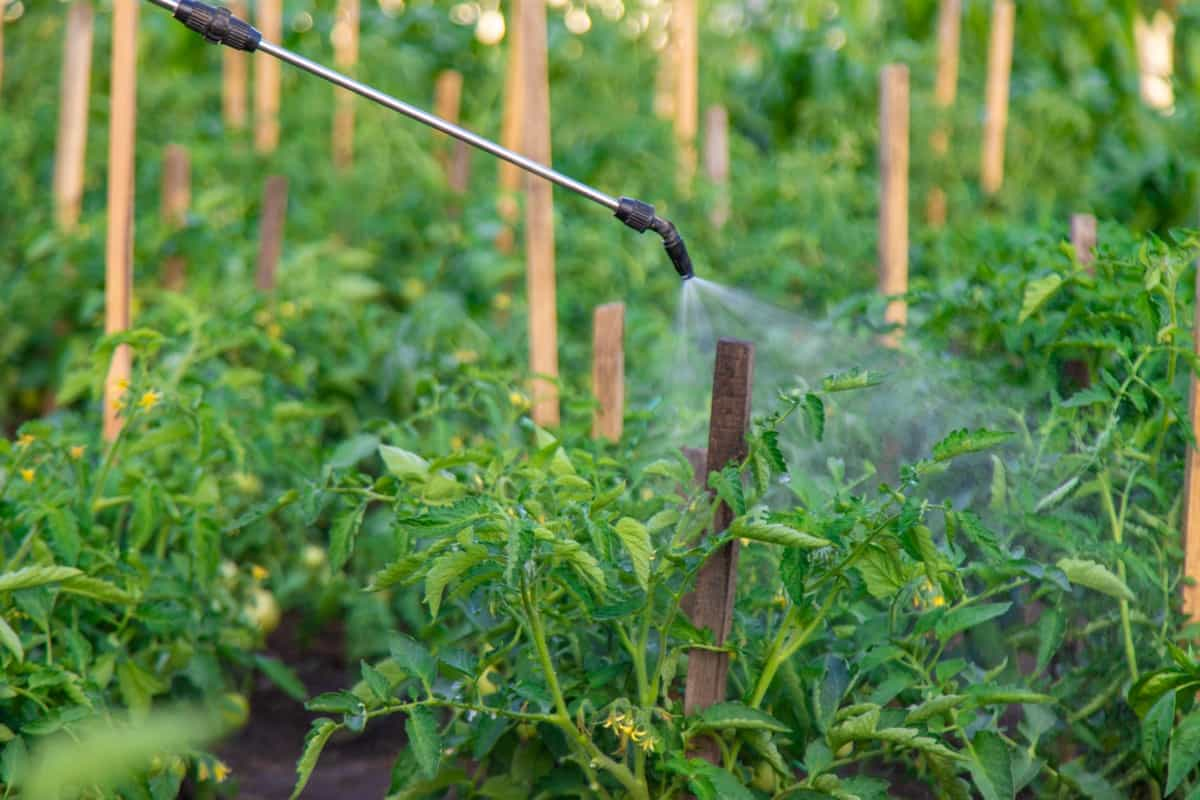
This is consistent with organic liquid tomato fertilizer because it doesn’t contain any artificial chemicals. Store the eggshell fertilizer solution in a cold, dark place to keep its plant-growth potency. This method guarantees healthy tomato crops with shiny shells and juicy, high-quality fruit by swiftly adding calcium to stave off infections and fixing nutritional deficits in tomato plants.
Using Eggshells in Planting Holes for Strong Tomato Roots
| Step | Action | Purpose | Notes |
|---|---|---|---|
| 1 | Shatter shells | Prepare for planting | Use 12 dry, clean shells |
| 2 | Add to holes | Strengthen roots | Sprinkle in deep hole |
| 3 | Bury stem | Promote auxiliary roots | Cover lower stem |
| 4 | Mix with soil | Speed decomposition | Combine with dirt/compost |
| 5 | Water regularly | Aid nutrient absorption | Prevents calcium deficiency |
| 6 | Monitor growth | Ensure robust plants | Supports heavy fruit loads |
When planting tomatoes, it’s best to use eggshells as a planting medium. To make sure there are plenty of eggshells in the tomato planting holes, shatter a dozen dry, clean eggshells and sprinkle them in a deep hole before plants are planted.
This method lends credence to the use of eggshell calcium in tomato root systems, as it promotes quick growth by strengthening root cell walls. Before planting tomatoes, bury the plant’s bottom stem with eggshells to increase root health and promote the creation of auxiliary roots.
To hasten their decomposition and make them a fertilizer for root growth, mix eggshells with dirt or compost. This method is in line with organic tomato plant care and provides a natural supply of nutrients.
Tomatoes that start off robust stay that way all season long thanks to the calcium in eggshells. Make sure to water your tomatoes often to encourage healthy root systems and help them absorb nutrients. This technique increases yields by lowering the incidence of calcium deficiency in tomato plants, which in turn makes the plants stronger and more capable of supporting heavy fruit loads.
Applying Eggshell Calcium Foliar Spray for Tomato Health
| Step | Action | Purpose | Notes |
|---|---|---|---|
| 1 | Prepare solution | Create foliar spray | Boil shells or use vinegar |
| 2 | Transfer to sprayer | Enable application | Use spray container |
| 3 | Spray in morning | Maximize absorption | Prevents leaf burn |
| 4 | Apply regularly | Prevent blossom end rot | Every 5-7 days |
| 5 | Dilute properly | Protect leaves | Avoid acidity damage |
| 6 | Monitor vitality | Ensure healthy plants | Look for lush foliage |
A foliar spray of calcium is applied directly to tomato leaves and fruits. For an eggshell calcium foliar spray, boil some eggshells or make a vinegar-based liquid calcium. Transfer the mixture into a spray container and proceed accordingly.
You can spray tomato plants with this mixture of foliar fertilizer, which speeds up the absorption of calcium in the leaves. To promote healthy tomatoes, maximize absorption of eggshell calcium, and avoid leaf burn, spray first thing in the morning.
Use an eggshell spray on tomato plants every five to seven days during blooming and fruit setting to prevent blossom end rot. Organic foliar fertilizer for tomatoes is enhanced using this method, which bypasses soil obstacles.
It’s crucial to properly dilute sprays to ensure eggshell fertilizer protection against acidity damage to leaves. The use of eggshells to strengthen cell walls and improve the quality of tomato fruits is in line with the principles of organic tomato plant care. Watch out for signs of increased vitality in tomato plants that are efficiently absorbing their nutrients. Tomato plants are guaranteed to be healthy with regular foliar spray applications, which minimize deficiencies and encourage lush foliage and vigorous fruit production.
Monitoring Tomato Plants for Calcium Deficiency Symptoms
| Step | Action | Purpose | Notes |
|---|---|---|---|
| 1 | Inspect fruits | Detect blossom end rot | Look for dark, sunken areas |
| 2 | Check leaves | Identify deficiency | Curled or stunted growth |
| 3 | Apply eggshells | Correct deficiency | Use powder or tea |
| 4 | Water regularly | Ensure calcium uptake | Inconsistent water reduces |
| 5 | Test soil pH | Check availability | Acidic soil limits calcium |
| 6 | Monitor growth | Promote vigor | Early detection reduces losses |
Monitoring for signs of calcium deficiency in tomato plants is crucial. Be vigilant for any indications of calcium deficiency in your tomato plants. One such symptom is blossom end rot, which manifests as dark, sunken areas on the fruit’s undersides.
The study recommends using eggshells as a source of calcium to prevent deficiencies, as it allows for quick remediation. Be vigilant for signs of calcium deficiency in tomato plants, such as curled, stunted leaves or delayed growth.
When tomato plant symptoms arise, boost the plant’s calcium levels with an application of eggshell powder or tea. To keep tomatoes healthy, you can use eggshells in this way. To compensate for plant deficits caused by eggshell fertilizer, water regularly, since irregular watering reduces calcium uptake.
Chemical diagnostics are not necessary because this protocol aligns with organic tomato plant monitoring. Because acidic soil conditions reduce the availability of calcium and impact tomato plant nutrient uptake, it is important to check the soil pH before utilizing eggshell calcium for tomato growth. Tomato plants with eggshells benefit from consistent monitoring, which promotes vigorous growth. Applying eggshells and identifying illnesses in tomato plants early can help keep crops healthy, which in turn reduces harvest losses and increases yields.
Combining Eggshells with Other Organic Amendments for Tomatoes
| Step | Action | Purpose | Notes |
|---|---|---|---|
| 1 | Mix with compost | Enrich soil | Add eggshell powder |
| 2 | Combine with manure | Balance nutrients | Provides nitrogen, potassium |
| 3 | Apply before planting | Allow decomposition | Months in advance |
| 4 | Avoid overuse | Prevent imbalance | Excess nitrogen hinders calcium |
| 5 | Monitor soil health | Ensure fertility | Check nutrient levels |
| 6 | Reapply regularly | Maintain environment | Supports rapid growth |
When combined with other organic additions, eggshells create soil that is rich in nutrients. To get the most out of eggshell powder as an organic fertilizer, mix it with compost, coffee grounds, or manure before applying it to tomato plants.
Combining organic fertilizers with eggshell calcium enhances the soil nutrient balance for tomato plants. Tomato plants benefit from the addition of calcium, potassium, and nitrogen that eggshells supply to compost.
Soil enrichment with eggshell fertilizer, added months before planting, improves the health of organic tomato soil by allowing for decomposition. This method is in line with sustainable tomato growing since it reduces chemical usage and waste.
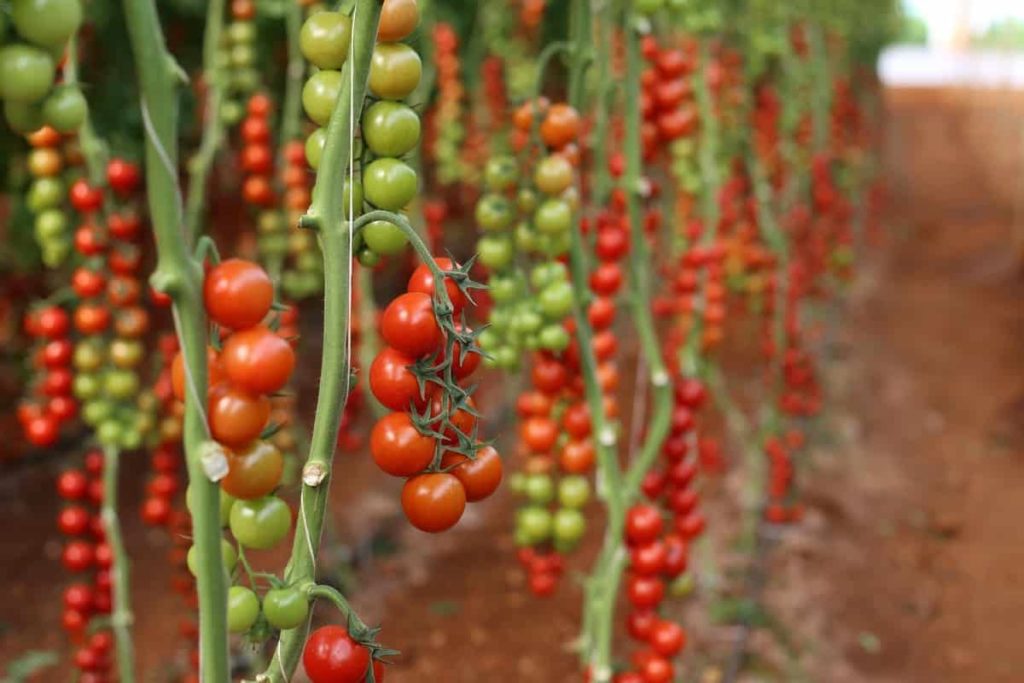
Overusing eggshell calcium additions, which are rich in nitrogen, can hinder calcium uptake and affect tomato plants’ nutrient absorption capabilities, so it’s best to avoid them in healthy soil. This strategy enhances soil fertility and structure by incorporating organic amendments, which in turn promotes tomato development. Regularly applying eggshells ensures healthy tomato plants, creating an ideal environment for rapid growth and abundant, high-quality fruit.
Storing Eggshell Calcium Products for Year-Round Use
| Step | Action | Purpose | Notes |
|---|---|---|---|
| 1 | Store powder | Prevent moisture | Use airtight glass jars |
| 2 | Keep tea refrigerated | Maintain freshness | Use within a month |
| 3 | Label containers | Track preparation | Monitor freshness |
| 4 | Store shells | Avoid mold | Use breathable bags |
| 5 | Keep in cool place | Preserve potency | Dry, ventilated area |
| 6 | Use year-round | Ensure nutrient access | Apply as needed |
As long as you preserve the calcium in eggshells correctly, you can use them to grow tomatoes. When storing eggshell calcium foods, be sure to use airtight glass jars and keep them in a cool, dry place to prevent moisture absorption.
This technique encourages the storage of eggshell powder for gardening by maintaining its efficacy as a calcium supplement for tomato plants. Keep the eggshell tea for plants in the fridge in an airtight container and drink it within a month to keep it from going stale and to ensure that the tomato plants get the calcium they need.
Labeling containers with preparation dates to monitor freshness can improve the storage of eggshell fertilizer and the care of organic tomato plants. Sustainable gardening with eggshells is compatible with this method, which maximizes resource utilization.
If you break the shells and store them in breathable bags, you may use them year-round to make calcium from eggshells without worrying about mold. This method allows for treatments at any time of year by ensuring that tomato plants always have access to nutrients. Properly storing eggshells allows healthy tomato plants to continue growing and producing abundant crops even when the weather isn’t ideal.
Scaling Eggshell Calcium Use for Large Tomato Gardens
| Step | Action | Purpose | Notes |
|---|---|---|---|
| 1 | Collect shells | Support multiple plants | Hundreds needed |
| 2 | Grind in bulk | Efficient processing | Use high-capacity blender |
| 3 | Apply to beds | Enrich soil | Sprinkle over compost/soil |
| 4 | Use spreader | Uniform application | Ensures even distribution |
| 5 | Monitor pH | Prevent imbalances | Check calcium levels |
| 6 | Reapply as needed | Sustain large crops | Supports prolific harvests |
For extensive tomato crops, it is essential to strategically apply eggshell calcium. Amass an enormous number of shells; you’ll need hundreds to support multiple plants. This approach will allow you to scale your eggshell calcium for extensive gardens.
This technique ensures tomato production with eggshell calcium while providing sufficient nutrients for mass-produced tomatoes. A high-capacity blender can be used to efficiently crush eggshells into a powder that can be used in large-scale tomato cultivation, improving the eggshell fertilizer for mass planting.
To increase the scalability of your garden, treat the soil with powdered eggshell calcium and sprinkle it over compost or soil in all of your beds. This procedure will enrich the tomato soil with eggshells. The method is in line with growing tomatoes organically and helps keep costs down.
For prolific tomato harvests in expansive gardens, uniformly apply eggshell calcium to tomato plants using a spreader or sprayer. Monitor the pH and calcium levels of the soil to prevent imbalances and guarantee healthy tomato harvests when using eggshells. This strategy is excellent for sustainable tomato production since it allows gardeners to have strong plants and many crops in big plots.
Conclusion
Producers seeking healthier, more robust tomato crops can benefit substantially from eggshell calcium. This guide has demonstrated how to collect, process, and use eggshells as a powder, tea, or liquid fertilizer to enhance soil health, prevent blossom end rot, and correct calcium deficiencies.
Planting eggshells into soil, compost, or foliar sprays can help gardeners naturally strengthen roots, improve fruit quality, and repel insects. These methods are in line with organic and environmental principles, and they reduce waste and reliance on chemical fertilizers.
If you want more tomatoes from your garden, no matter how big or little it is, an easy and inexpensive solution is eggshell calcium. Optimizing nutrient uptake through balanced applications and regular monitoring leads to strong plants and abundant harvests.
Redesign your tomato garden in an eco-friendly way and enjoy the bounty of locally grown, vibrant veggies. In the pursuit of perfect gardening, small, everyday items can yield remarkable outcomes. You will be amazed at the impact on your crops when you begin saving eggshells immediately.






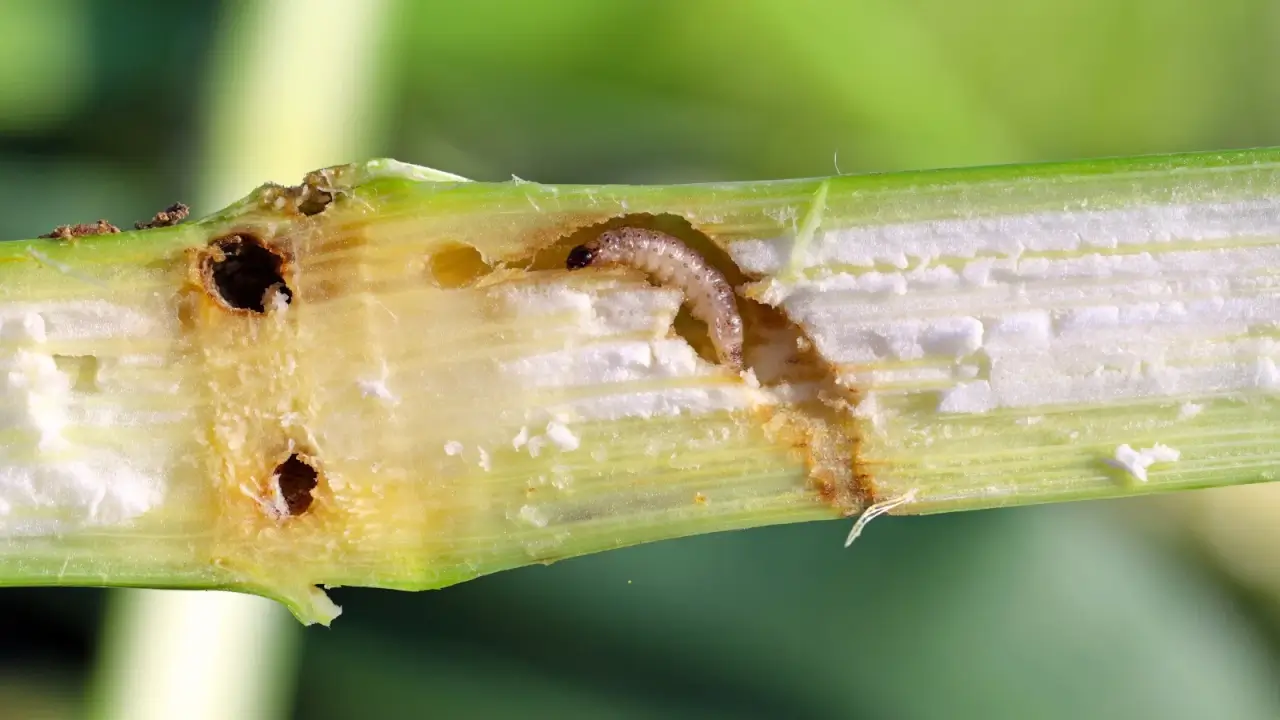

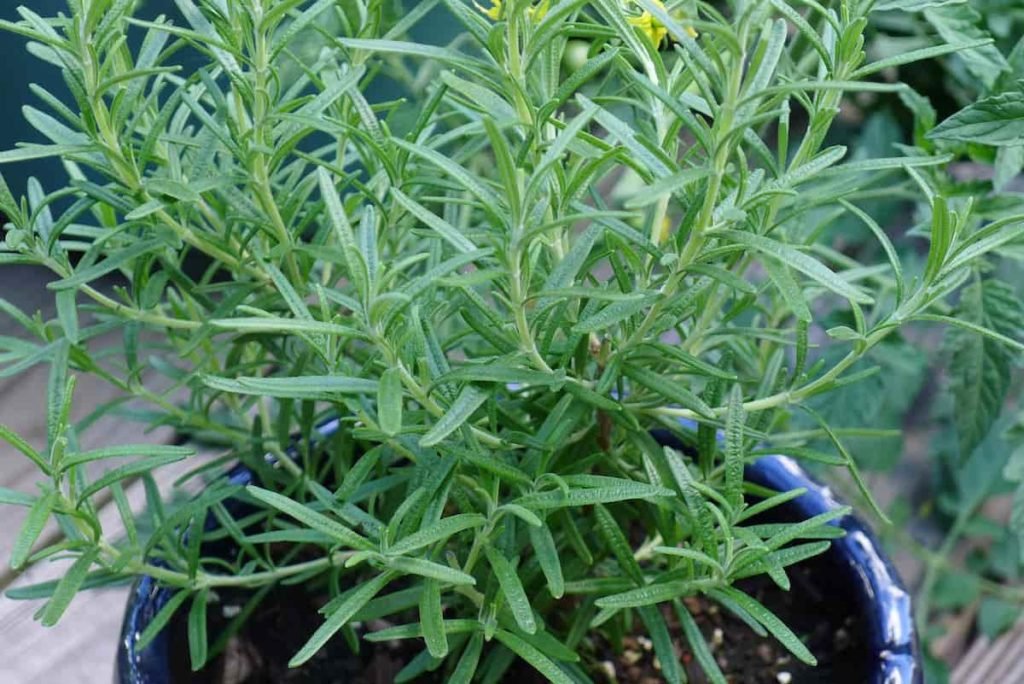
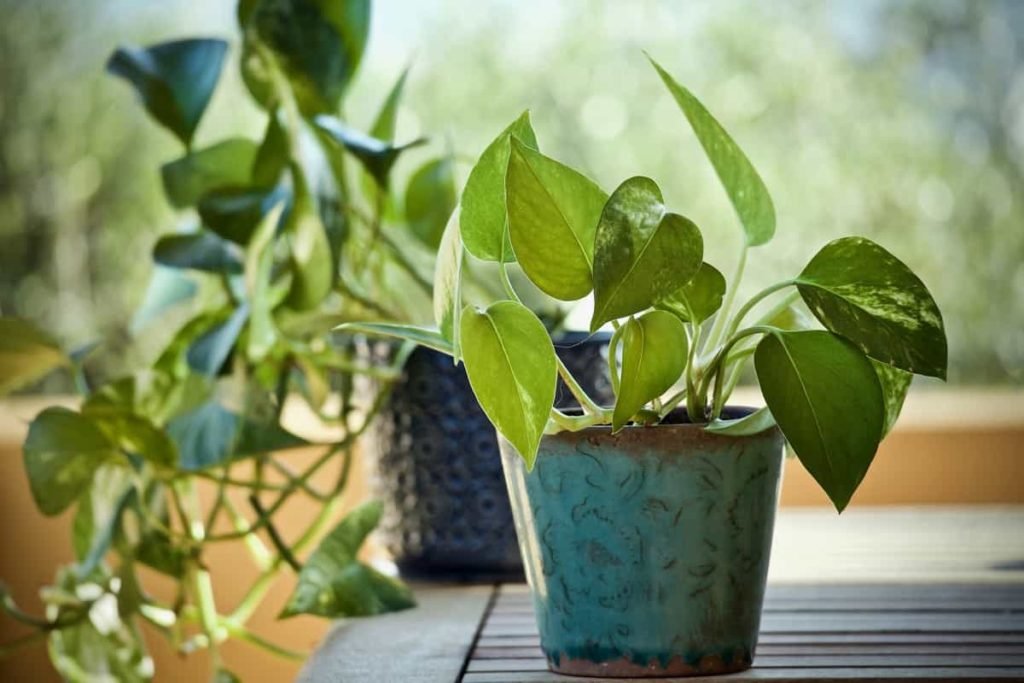




Leave a Reply